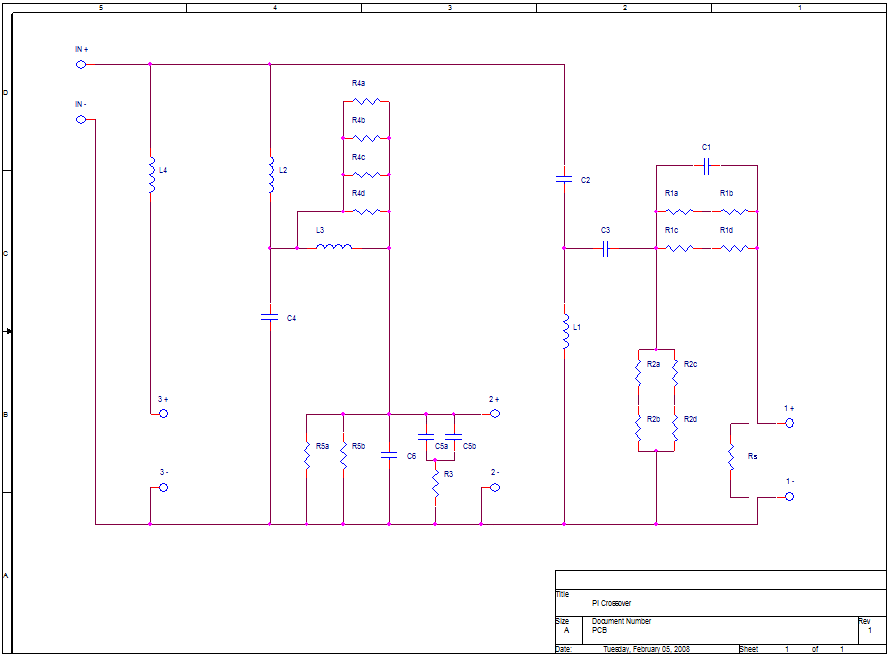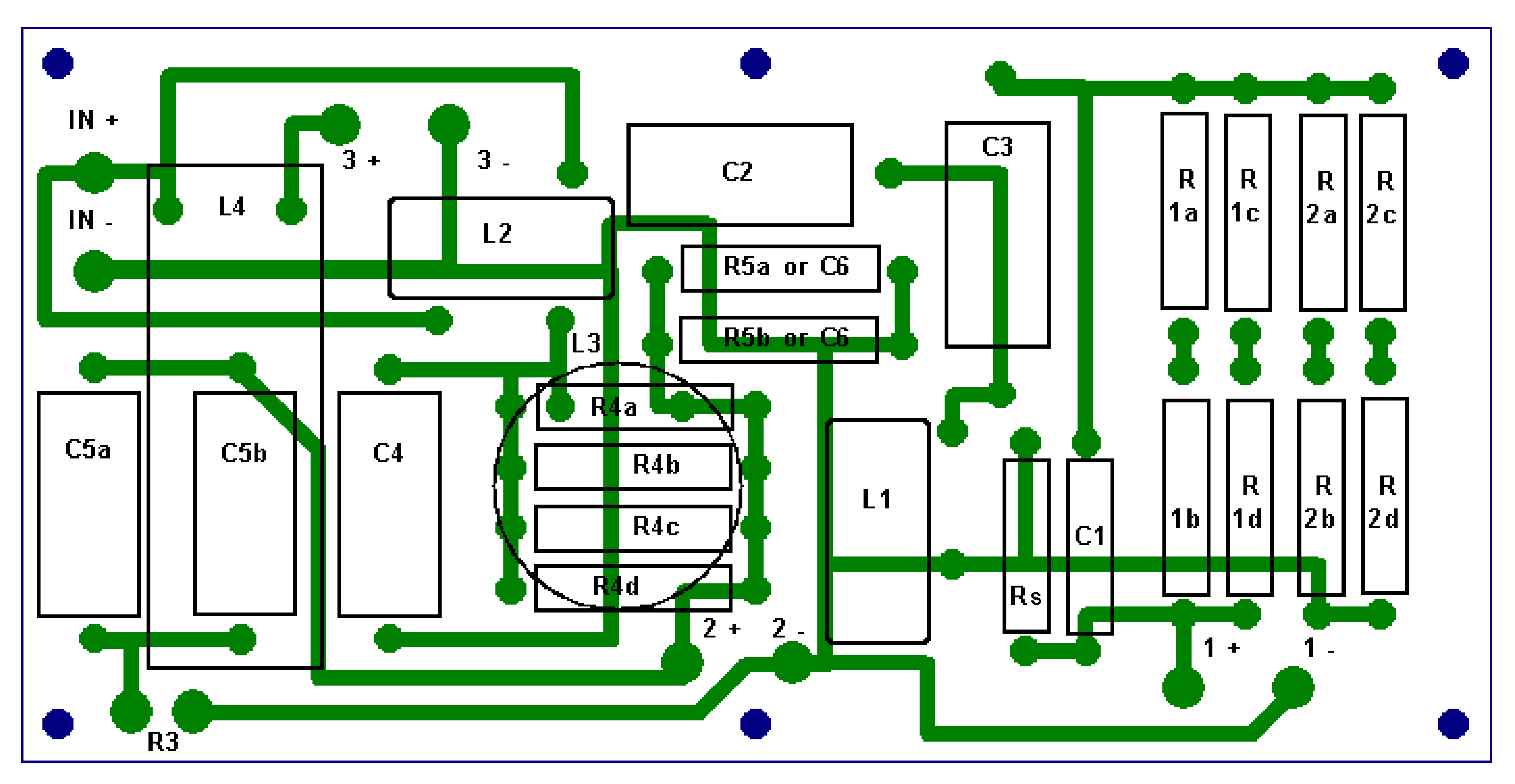| Re: PCB Crossovers [message #51865 is a reply to message #51797] |
Thu, 28 February 2008 17:22   |
 |
 Wayne Parham
Wayne Parham
Messages: 18985
Registered: January 2001
|
Illuminati (33rd Degree) |
|
|
You betcha. We have plenty of them in stock.You'll notice from the schematic and component layout below that the board can be populated many ways. As an example, the tweeter circuit can be made first through fourth order, with or without padding and top octave compensation. If first or second order is desired, position C3 should be jumpered. Likewise, the midrange (or midwoofer, depending on model) circuit can be made first through fourth order, with or without padding. L3 may be jumpered for first or second order networks, or resistors R4(a-d) may be populated instead. They can be used together for LF augmentation, using R4/R5 padding with inductor L3 bypass. Last but not least, there is a place to put the coil L4 used in the woofer circuit of the cornerhorn.
I basically made this board capable of supporting my whole line of speakers (except one π and two π) without having to resort to putting components in cable assemblies. There is ample room to mount every component for each of the models. The only exception is the Zobel resistor R3 is mounted off-board. It has mounting holes and is designed for chassis mount, so you wouldn't want to mount it on the circuit board. It is connected to the PCB with spade lugs instead. In some cases component locations are shared in the midrange/midwoofer circuit, where two models have two different configurations. But there is plenty of room for everything, and it is easy to lay it all out with the traces and lands provided.
 π
π Crossover PCB schematic
 π
π Crossover PCB component layout
|
|
|
|







